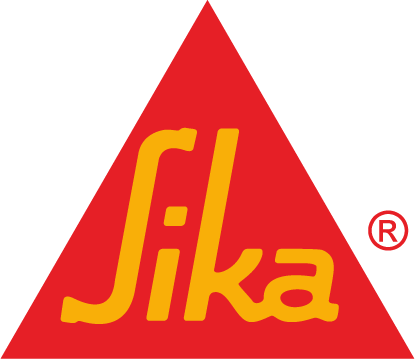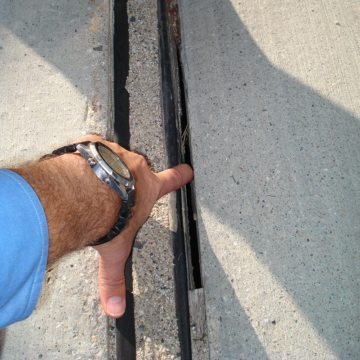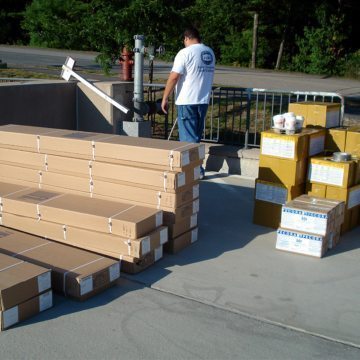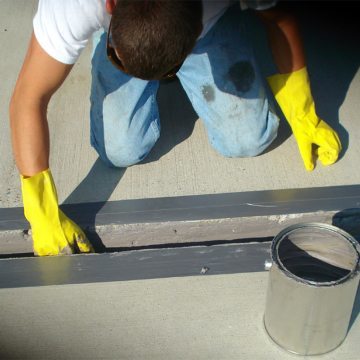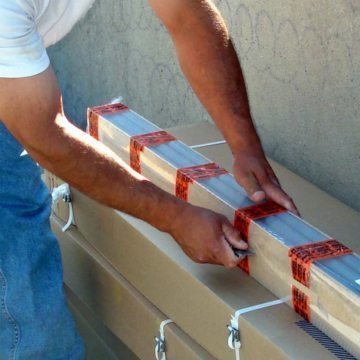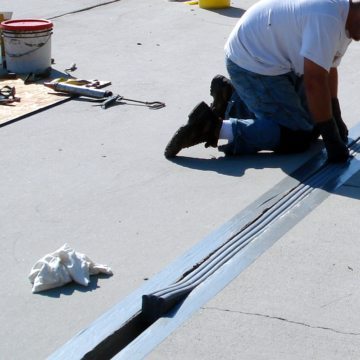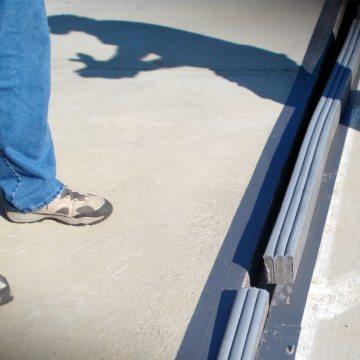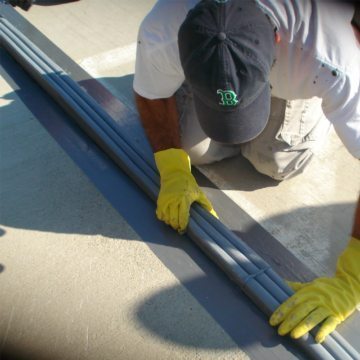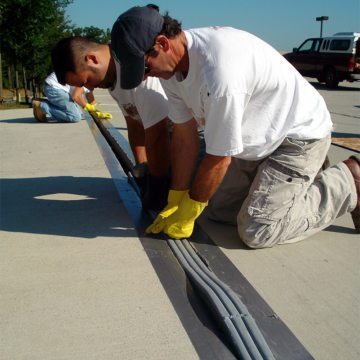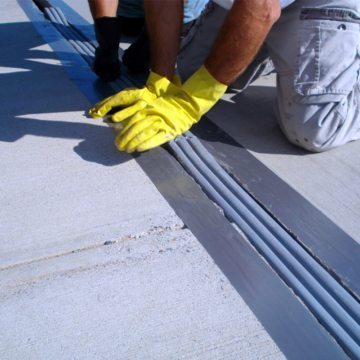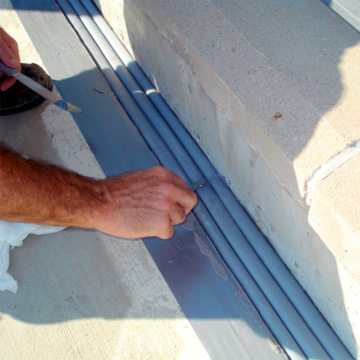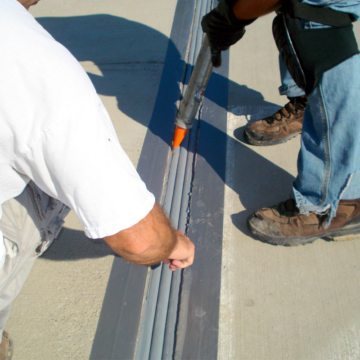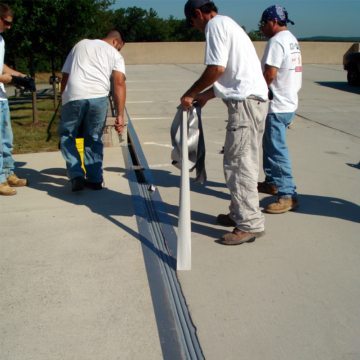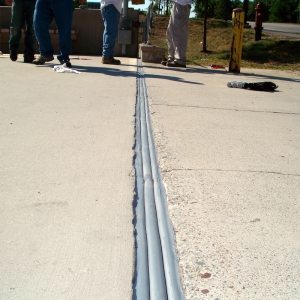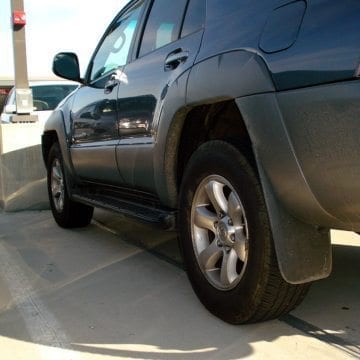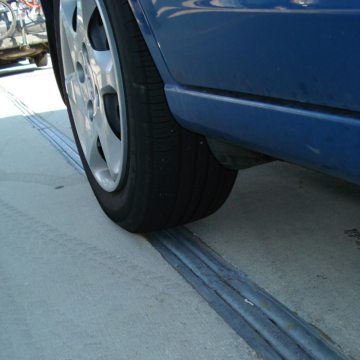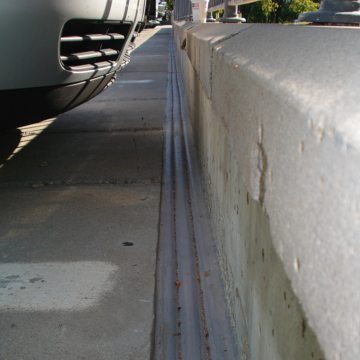DSM SYSTEM Installation in Concrete
DSM SYSTEM Installation into Concrete Expansion Joints
On this project we are replacing a failed inflated-type expansion joint seal. This older technology relies on adhesive that is in severe tension during the joint opening cycle. It is prone to adhesive failure.
The deck is a factory-topped, precast double-tee syst
The DSM SYSTEM consists of:
– 6.56 LF (2m) sticks of the precompressed foam (in long brown boxes);
– 2-part epoxy adhesive (yellow boxes);
– sausages of silicone (white labeled boxes).
The DSM material expands slower when cold and faster when hot.
On this cool, early autumn day, the material was stored in the sun to warm it up to make it expand a bit faster.
(On hot days, the material would be installed in the shade, in an air-conditioned van or room, or can even have bags of ice placed on top of the sticks in the boxes if needed to slow expansion).
By lowering the bottom of the stick into the joint, it is checked for fit.
If not snug enough to hold its own weight, the material is left alongside the joint to expand a bit further.
While this is happening another stick, or sticks, can be opened and laid on the deck alongside where it will be installed.

